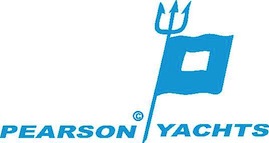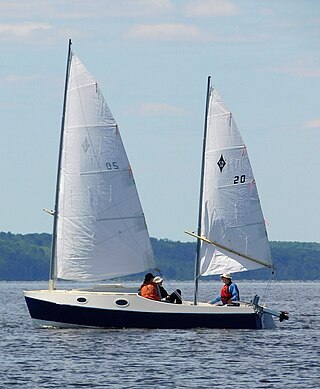
A sailboat or sailing boat is a boat propelled partly or entirely by sails and is smaller than a sailing ship. Distinctions in what constitutes a sailing boat and ship vary by region and maritime culture.

A sailing vessel's rig is its arrangement of masts, sails and rigging. Examples include a schooner rig, cutter rig, junk rig, etc. A rig may be broadly categorized as "fore-and-aft", "square", or a combination of both. Within the fore-and-aft category there is a variety of triangular and quadrilateral sail shapes. Spars or battens may be used to help shape a given kind of sail. Each rig may be described with a sail plan—formally, a drawing of a vessel, viewed from the side.

A ketch is a two-masted sailboat whose mainmast is taller than the mizzen mast, and whose mizzen mast is stepped forward of the rudder post. The mizzen mast stepped forward of the rudder post is what distinguishes the ketch from a yawl, which has its mizzen mast stepped aft of its rudder post. In the 19th and 20th centuries, ketch rigs were often employed on larger yachts and working watercraft, but ketches are also used as smaller working watercraft as short as 15 feet, or as small cruising boats, such as Bill Hanna's Tahiti ketches or L. Francis Herreshoff's Rozinante and H-28.

Sharpies are a type of hard chined sailboat with a flat bottom, extremely shallow draft, centreboards and straight, flaring sides. They are believed to have originated in the New Haven, Connecticut region of Long Island Sound, United States. They were traditional fishing boats used for oystering, and later appeared in other areas. With centerboards and shallow balanced rudders they are well suited to sailing in shallow tidal waters.

The junk rig, also known as the Chinese lugsail, Chinese balanced lug sail, or sampan rig, is a type of sail rig in which rigid members, called battens, span the full width of the sail and extend the sail forward of the mast. While relatively uncommon in use among modern production sailboats, the rig's advantages of easier use and lower maintenance for blue-water cruisers have been explored by individuals such as trans-Atlantic racer Herbert "Blondie" Hasler and author Annie Hill.
Gary Mull was an American yacht designer who created many popular fiberglass sailboats.

Pearson Yachts was a sailboat manufacturer founded by Everett Pearson and Clinton Pearson in 1956. One of the first fiberglass sailboat manufacturers, they grew rapidly during the 60s and 70s, while also developing and designing new boats. However, the company changed ownership throughout the 1980s, after which the company filed for bankruptcy, and was eventually sold to Grumman Allied Industries in 1991. The rights to the name are now held by the Pearson Marine Group.
The following outline is provided as an overview of and topical guide to sailing:
The Freedom 28 is an American sailboat, that was designed by Gary Mull and first built in 1986. The design is out of production.
The Freedom 28 Cat Ketch is an American sailboat that was designed by Gary Hoyt and Jay Paris, first built in 1979. The design is out of production.
The Freedom 36 Cat Ketch, also called the Freedom 36 CC, is an American sailboat, that was designed by Gary Mull and first built in 1985. The design is out of production.
The Beachcomber 25 is an American trailerable sailboat that was designed by Walter Scott as a cruiser and first built in 1979.
The Freedom 25 is an American sailboat that was designed by Garry Hoyt as a single-handed racer-cruiser and first built in 1980.
The Herreshoff 31, also called the Cat Ketch 31, is an American sailboat that was designed by Halsey Chase Herreshoff as a cruiser and first built in 1979.
The Freedom 35 is an American sailboat that was designed by David Pedrick as a racer/cruiser and first built in 1993.
The Freedom 39 PH is an American pilothouse schooner sailboat that was designed by Ron Holland and Gary Hoyt as a cruiser and first built in 1983.
The Freedom 39, also called the Freedom 39 Express, is an American sailboat that was designed by Ron Holland and Gary Hoyt as a cruiser and first built in 1983.

The Core Sound 20 Mark 3 is an American sailboat that was designed by B&B Yacht Designs for cruising and first built in 2014. The boat is supplied as a series of kits and plans for amateur construction.
The Freedom 21 is an American trailerable sailboat that was designed by Gary Hoyt and first built in 1982. It was available as a catboat or sloop rig.
The Pearson 23C is an American trailerable sailboat that was designed by William Shaw as a cruiser and first built in 1983.







